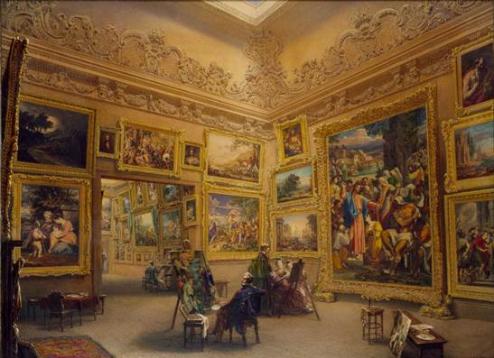John Julius Angerstein (1735-1823): Patron and Promoter of British Art in Georgian London
Monday 25 April 2016, 5.00PM
Speaker(s): Susanna Avery-Quash (National Gallery)

Angerstein, a successful financier, was a natural philanthropist, and, among other good deeds, helped establish the Veterinary College, promoted the idea of life-boats, and campaigned to stop the use of children as chimney-sweeps. He also amassed a fine art collection, much of which was displayed at his London Town House, No. 100 Pall Mall, which, from the early 1800s, he opened to a select public. Thirty-eight pictures from Pall Mall were bought in 1824, after Angerstein’s death, by Lord Liverpool’s government to found the National Gallery, including works by Old Masters as such Raphael, Titian, Claude, and Rubens. What is less well-known is that Angerstein patronised many living British painters and displayed their work at his suburban villa, ‘Woodlands’ in Blackheath. He also chose to promote British art in a number of more indirect ways; for instance, through subscriptions to public monuments, membership of societies such as the British institution and loans of pictures for artists to copy at the Royal Academy’s newly-founded School of Painting. This lecture will shed fresh light on Angerstein as a patron and promoter of British Art in Georgian London, and offer a re-assessment of his British picture collection -the 'forgotten' part of Angerstein's art collection - in order to build up a better understanding of what a late 18th/early 19th-century art collection looked like in its entirety.
Dr Susanna Avery-Quash is the Senior Research Curator (History of Collecting) at the National Gallery. Topics on which she researches, publishes, teaches and organises conferences and exhibitions include the history of the National Gallery and other important public and private art collections; trends in artistic taste; and the evolution of the art market. She co-directs a collaborative research project between the Gallery and the Getty Research Institute, British Art Sales, 1680-1780 and is responsible at the Gallery for a new MA, run the University of Buckingham, in the history of the art market and collecting. Her research has concentrated in recent years on Sir Charles Eastlake, first director of the National Gallery. She edited Eastlake’s travel notebooks for the Walpole Society in 2011 and co-authored with Professor Julie Sheldon, Art for the Nation: The Eastlakes and the Victorian Art World (London, 2011), and was responsible for curating two exhibitions about Eastlake – one at the National Gallery in 2011 and another at Plymouth, Eastlake’s birthplace, in 2012.
Location: The Bowland Auditorium, Berrick Saul Building
